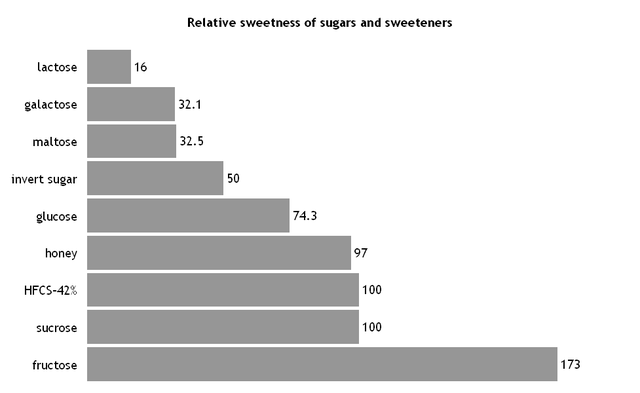All sorts of reasons for the “obesity epidemic” have been surfacing. Some have blamed the television for promoting “couch potatoes,” others the increasing number of families who eat only fast food, which tends to be high in fat and salt, others blame a lack of exercise, starting in school-aged children who do not have any kind of daily exercise plan or who lost gym classes in the efforts by schools to increase grades or scores on tests. Still others look to a much bigger picture and suspect that the U.S. government is actually fueling the obesity epidemic by its own policies.
Commen t on “Is U.S. Farm Policy Feeding The Obesity Epidemic?” on All Things Considered 10 Aug 2011. A look at one possible cause of the obesity epidemic in this country. Farm subsidies were examined to see if they promoted unhealthy eating. A reasoned understanding of what these subsidies do suggests that they do not promote unhealthy eating. This report suggested that the processing and marketing of foods may have a bigger effect, although no study confirms this. A very different take on the problem suggests that the U.S. farm policy supports obesity-promoting farm practices by encouraging the use of pesticides in genetically modified food crops, and not encouraging organic farming practices. There is scientific evidence showing that pesticides can be strongly linked to, if not cause, diabetes and obesity. It is time to take a closer look at these reasons and consider other reasons that have not gotten much attention.
t on “Is U.S. Farm Policy Feeding The Obesity Epidemic?” on All Things Considered 10 Aug 2011. A look at one possible cause of the obesity epidemic in this country. Farm subsidies were examined to see if they promoted unhealthy eating. A reasoned understanding of what these subsidies do suggests that they do not promote unhealthy eating. This report suggested that the processing and marketing of foods may have a bigger effect, although no study confirms this. A very different take on the problem suggests that the U.S. farm policy supports obesity-promoting farm practices by encouraging the use of pesticides in genetically modified food crops, and not encouraging organic farming practices. There is scientific evidence showing that pesticides can be strongly linked to, if not cause, diabetes and obesity. It is time to take a closer look at these reasons and consider other reasons that have not gotten much attention.
Updated: 25 July 2016
Summary
NPR reporter Frank Morris looks at the argument that this country is fat because the U.S. government promotes the production of poor food quality by subsidizing farmers

to grow grains. Large amounts of grain goes into the making of fast foods which are cheaper than healthy foods–at least at restaurants (grain is healthy, just not processed as donuts, tacos, and hamburger buns). Julian Alston (agricultural economics, University of California, Davis) discusses how subsidizing farmers does not necessarily make food cheaper. He suggests that subsidization only helps to stabilize prices, so that if prices fall because of overproduction, the farmer still gets paid to cover expenses by encouraging him/her to not grow overproduced food. All farm support such as subsidies, tariffs and mandates (such as the ethanol in fuel mandate) will add up to an increase in food prices, which should discourage obesity [if, as is assumed, that all or most obesity is due to overeating, which it is not].
More importantly, food processors and marketers tend to affect the “food environment” more than farm subsidies (Margo Wootan, director of nutrition policy at the Center for Science in the Public Interest). Most of the costs of food are from the production of processed food in packages (cereal, cheese, boxed meals, pasta, rice cakes, granola bars, canned fruits and vegetables). The report briefly mentions the making of corn syrup and how its price goes up if the cost of sugar does, simply because all sweeteners are affected by what happens to one of them.
Conclusion: farm subsidies are not lowering the cost of food and making it easier to overeat. However, the packaging industry may be causing more dependence upon processed food, and inadvertently contributing to the obesity problem, even though poor people are as likely to eat fast food and be overweight as wealthier people are.
My Comment Posted at NPR
The U.S. farm policy may be supporting obesity in this country for another reason. The government has consistently promoted non-organic farming (where herbicides, insecticides, and pesticides are used on produce) rather than organic farming. Numerous articles have come out from the various alerting agencies (NaturalNews, OCA) as evidence of selective action against organic farmers, although a recent judge ruled that organic farmers can sue pesticide users for contamination of their crops. Pesticides have been shown to have properties that could act on taste buds and directly on the pancreas in ways that would promote obesity. See my blog post on “Obesity and Pesticides” at https://marthalhyde.wordpress.com/2011/08/11/obesity-and-pesticides/ for details.
The problem with fructose from corn syrup, that has been associated with obesity (but never shown to cause it), may not lie with the chemical, fructose, but with the residues from its production, which contaminate the high fructose corn syrup, and may include chemical elements that also interfere with fat metabolism.
Not all chemical elements can be removed from the body. The liver only detoxifies by breaking down toxic compounds to their elemental state. Most of the toxic chemical elements (like aluminum, zinc, cadmium, lead, excess iron, copper, selenium) are sequestered in the liver unless they can be combined with something else to carry them out to the kidney or gut. Supplying the liver with these carriers may not be that easy, depending upon the toxin and the health status of the liver. “Aging” will contribute to the failure in the liver to do this, since the additional emotional and physical traumas that aging brings to us will compromise effectiveness of all organs of the body. See my blog post Using MRT: Removing Toxins and Emotional Trauma for more discussion on the effect of toxins on the body.
The Problem with High Fructose Corn Syrup

Many people have suggested that high fructose corn syrup became so prevalent in processed foods as the sweetener of choice because it costs less than sugar, because of farm subsidies (Dr. Mark Hyman). Because fructose is so much sweeter than glucose (table, or cane, sugar is sucrose which is 50:50 glucose:fructose), less of it is needed to sweeten something as much as table sugar does, which also reduces its cost. This news report did not address an obesity outcome of farm subsidies. The high fructose corn syrup debate is relevant, however.
A very highly controversial paper published in 2004 stirred up one hornet’s nest in debate. Some theoretical arguments for high fructose corn syrup being involved in the obesity epidemic were presented by Bray et al., (2004).
But first, some problems with statistics. The sudden increase in dietary fructose use appears to track closely with the level of obese and overweight condition in the U.S., but only after 1985, and even that trend can be considered flaky for another reason. The weight levels did not rise as precipitously as the use of dietary fructose did after 1985. This problem may reflect the ill-advised fitting of 4th order polynomial curves on five points for each of the weight levels, taken over a period of 40 years. One can understand the temptation to doing this, because part of the plots of fructose levels look like they fit such a curve. They would need 10,000 individual points of body weight to justify this level of a polynomial, and at least 100 for any polynomial. The obese and overweight levels in the U.S. clearly have some other cause, although high fructose corn syrup use may still play a role.
Bray et al. (2004) present strong theoretical arguments on how fructose can mess up normal metabolism to the point that it might create obese or overweight individuals. They suggest that fructose may contribute to the obesity epidemic because it is metabolized differently from glucose in the body. They think this difference is important in several ways: fructose is absorbed by all cells except the pancreatic β cells and the brain, which lack the critical receptors for its absorption. Because it cannot supply energy to those organs, it triggers less insulin release than glucose does, which would in turn, cause less release of the “stop eating” hormone (leptin), when enough energy is gotten from the food.
So although diabetics benefit from fructose because insulin levels can be controlled more easily, it undermines the natural mechanism for determining when to stop eating. Furthermore, fructose causes a much more efficient production of triacylglycerols, which are important as transporters of dietary fat (as LDL cholesterol) between liver and blood vessel, making LDL levels increase in the blood after ingesting fructose. Experiments with lab rats show that using fructose to sweeten their foods causes an increase in caloric intake (Cha et al. 2008).
So, if one believes that obesity is caused mostly by overeating, and eating too many calories, then the above arguments can be quite convincing. However, because of the lack of strong experimental data and poor overall correlation between the use of high fructose corn syrup in our foods and the obesity epidemic, one would have to conclude that there is something else involved in the creation of this epidemic.
There are other reasons to doubt the conclusions from this article. Klurfeld et al. (2013) mention that neither glucose nor fructose is eaten in isolation, nor in their pure form by humans. This was a very important counter-argument to the experimental studies that confirmed the conclusions by Bray et al. (2004).
(Klurfeld et al. 2013) also point out that both sucrose (table sugar) and high fructose corn syrup contain almost identical amounts of glucose and fructose and both are absorbed equally by gut cells. They also cite studies on humans where there were no short term differences between the two substances in any metabolic or health effect. Finally, they also show that there are obesity epidemics where no high fructose corn syrup is available, as in Mexico, Australia, and Europe. Klurfeld et al. (2013) say that, in those studies where an effect has been found by high fructose corn syrup, the doses were far higher than would feasibly be in anyone’s diet.

However, Dr. Mercola (2012) brings attention to the fact that all four authors of the Klurfeld et al. (2013) study have ties to the industries which use or encourage the use of high fructose corn syrup. Conclusions by anyone with clear monetary ties to an industry which funds their research can be questionable. Howver, Klurfeld et al (2013) have excellent reasoning about lacking the information most needed for drawing a causal relationship between obesity and high fructose corn syrup–results from a randomized, controlled experiment. Dr. Mercola also mentions that fructose is found in fruit, but always accompanied by vitamins and antioxidants that might mitigate the bad health effects of pure fructose. He also considers sugar in any form as being unhealthy, as well.
Since the public knows nothing about the process for producing high fructose corn syrup (Archer Daniels Midland and Carghill will not reveal it, as told to Dr. Mark Hyman by Michael Pollan, author of The Omnivore’s Dilemma), it is difficult to tell what residues might be found in it. However, Dufault et al. (2009) found mercury in high fructose corn syrup. There are probably other residues in it, too, but no one will know until someone tests it.
The Problem with Pesticides

Pesticides, herbicides and insecticides often cannot be broken down during digestion, but get absorbed and stored. They tend to exert bad influences on flow of other nutrients in the body. Pesticides like to hang around fat cells in particular, preventing fat cells from working very well. If fat cells cannot metabolize fat, a person cannot use the fat for energy, experiencing hunger sooner after eating a meal. Since sugars only last 20 min (the rest gets turned into fat), this, in turn, makes one want to eat more at a meal so that the body has longer staying power. The liver keeps signaling the fat cells to provide energy, but, if damaged, they cannot, so the liver then triggers more fat cells to be made. For these reasons a person could get fatter.
Most pesticides are hormone disrupters, but many are also carcinogenic, neurotoxic, reproductive or developmental toxins, as well as toxic to bees (“What’s On My Food“.) Phenoxy herbicides and fibrates (anti-cholesterol drugs) block a particular hormone, T1R3, from attaching to certain cell receptors, most notably the sweet taste buds and all pancreatic cells, preventing the pancreas from producing insulin. The action is similar to what will happen when eating a high-carbohydrate diet (Maillett et al 2009)–it stimulates pancreatic cells and insulin gets released more quickly, which in turn, will lower blood sugar, increasing the desire to eat more food. Over time, it depletes the cells of insulin and they cannot respond every time sweet foods are eaten, resulting in Type 2 diabetes.
The use of pesticides has gone up in this country. The genetically engineered seed debate is a case in point. Monsanto has been quietly buying up all other seed sellers in order to replace all seeds with genetically engineered seeds. Naturally-produced seeds cannot be patented, but genetically-modified seeds can be. Get rid of competitors and a GM company can profit in two ways. By making the seeds tolerant to herbicides, Monsanto has encouraged farmers to increase their use of such chemicals. These chemicals do not get washed off most produce, and many chemicals are systemic, meaning that they are taken up into the food part that gets eaten, e.g. root, stem, leaf or fruit.

Even beef is not devoid of pesticides, since cows eat pesticide-ridden forage, storing pesticides near fat cells. Since the cattle industry wants its beef riddled with fat for tenderness, unlike pork or lamb, no one can avoid eating this pesticide-laced fat when eating conventionally-produced beef, but can avoid this type of fat by eating organic beef.
Pigs and sheep tend to keep their fat on the periphery of muscle, where the fat is more easily separated from the meat. Sausage is generally made by grinding the fat in with the meat. Fresh sausage sold in grocery stores has little or no additives, but processed sausage does. Nitrates and nitrosamines (also produced naturally by burning the skin on chicken, and deep-fat-frying potatoes) are generally added as preservatives, but both have been implicated in causing cancer. The sausage industry has responded appropriately to this discovery by adding citrate (citric acid) which neutralizes nitrates and nitrosamines.
A recent study was published that followed a large population of people for about 28 years and compared incidence of eating “red meat” with incidence of type 2 diabetes. It found that people who ate red meat also showed a higher incidence of Type 2 diabetes, than those who did not eat red meat. Those who ate processed red meat, had an even higher incidence of Type 2 diabetes (Harmon 2011, Pan et al 2011). The medical profession tends to translate “higher incidence” into “higher risk,” but using the latter phrase implies cause and effect, and this article did not results of any experimental study. They conclude that eating “red meat” increases the risk of developing Type 2 diabetes. Because these studies did not included controlled experimental conditions, a second conclusion can be reached–that developing Type 2 diabetes increases the risk of eating “red meat.” However, there is also a possible third conclusion, that neither behavior affects the other.


Pan et al (2011), combined beef, pork and lamb into one statistical category, and then split that up into two categories, processed or unprocessed meat. The authors suggest that something in “red meat” must be causing diabetes. Both processed and unprocessed “red meat” were associated with higher incidences of Type 2 diabetes. It is known that there are more chemicals in processed meat, but they did not suggest what chemicals were in unprocessed red meat. The study did not look at organic beef vs non-organic beef, nor separate out pork and lamb from beef (which they should have, for the good reason mentioned above about pesticides).
If this study were not an observational study, but an experimental study, it would have chosen subjects randomly, and fed a particular diet whether the subjects wanted it or not. In an observational study, scientists observe what foods people eat and then run associative statistics to see what characteristics people have who choose one category over another. For this publication, they compared eating incidence with incidence of type 2 diabetes. Not assessed in this case is how the desire for red meat, or for a particular item might be influenced by the same thing that causes diabetes to develop. By using the terms “risk” when describing the association with diabetes, people erroneously come to the conclusion that eating red meat causes diabetes, when no such study has shown this to be the case.
Update: 18 Sept 2012
There is a large body of literature showing strong links between pesticides and other farm chemicals and obesity, diabetes, and other health problems. In fact, Tiwari 2011 discusses how we have to rethink the obesity epidemic in the light of all of these studies. See below for some of that discussion.
Other Obesity Reports
Update: 26 Feb 2013

Comment on “Study: Mediterranean Diet Can Greatly Reduce Risk Of Heart Attack, Stroke” on All Things Considered 25 Feb 2013, how faulty reasoning can lead to faulty methods, even for a good clinical/experimental study on the effects of the Mediterranean diet on incidence of heart disease. Also discussed are the importance of the fish proteins, with reference to two critical studies which present data that suggest other how both fat and protein may play a role in preventing major cardiovascular events.
Summary
The report today was very brief and therefore additional data from the published study are included in this summary. NPR news anchor, Audie Cornish, interviews NPR reporter Lauren Frayer about a study in the New England Journal of Medicine published online on February 25, 2013 which is the first randomized, controlled clinical study of the effects of the fats and oils found in the Mediterranean diet on the incidence of heart disease. Frayer interviewed a spokesperson for the American Heart Association, Rachel Johnson, about this study. A total of 7,447 people took part in this trial (57% women, 43% men.) Two experimental groups were chosen. Both were given the Mediterranean diet, which is high in whole grains, legumes, fresh vegetables and fruits, fish, and nuts. One experimental group was supplemented with olive oil, the other with nuts. The control group was given advice on low-fat diets. Both experimental and control groups were followed for about 5 years, and were contacted quarterly to get their supplements and education (control got a non-food gift). Outcomes measured included incidence of heart attacks, strokes and deaths. They found that those on the Mediterranean diets had a 30% less likelihood of heart attack, stroke or death. The results were so dramatic that they stopped the trial and informed all subjects of the results. They concluded that for person with a high risk of major cardiovascular events, their risk was reduced significantly if they ate a Mediterranean diet supplemented with either olive oil or nuts.
My Comment Posted at NPR
The article by Estruch et al. (2013) is freely available at NEJM.
The devil is in the details. The people in the control group were given advice on eating low-fat meals and encouraged eating fresh fruits and vegetables. The Mediterranean diet included whole grains, legumes, fresh fruits and vegetables, lots of fish and nuts, and foods prepared with olive oils and not other oils. It also tends to be low in red meats (however, the importance of this element is debatable, since quality of meat may have a bigger effect, because of its relation to the presence of toxins and not color–see below). As mentioned, the two experimental groups differed in which supplemental item they got, oils or nuts.
This experimental study clearly shows that heart disease is less likely to occur in people eating the Mediterranean diet (check out the discussion of the protocol). However, understanding cause and effect is still problematical. One reason is that 40% of the Mediterranean diet is fat/oil. The authors reason that the type of fat it has is the clue, mostly mono-unsaturated fatty acids (MUFAs). MUFAs are known to lower LDLs to what is found in low-fat diets, but also maintains high levels of HDLs. The relative levels in both have been shown to play a role in heart disease.
Confining their focus to the fat content may be the problem. From earlier clinical studies showing the beneficial effects of the fats and oils found in the Mediterranean diet, the researchers conclude that the benefit of fats and oils come from preventing heart disease (but it is unknown what is actually causing the heart disease from clinical/experimental studies), and not from more rapid repair from assault by a true cause of heart disease. These fats have been shown to also be anti-inflammatory, a process used by the body to repair damaged tissue. They clearly consider the animal fats in fish as “safer” than the animal fats in terrestrial animals, which may actually be true (see below), but their reasoning came only from the “fat” (not the protein) end of the spectrum of all the nutrients found in these foods, many of which are held in common with the fruits, veggies and whole grains (MUFAs are found in all). I discuss more on this study, including why I think that the protein in fish may do the prevention of heart disease, why “red meat” is not a good factor to consider and that the cause of heart disease lies in the toxins inside us (see my blog post ‘Obesity and Pesticides’ at https://marthalhyde.wordpress.com/2011/08/11/obesity-and-pesticides/.)
Methodological Problems
Because their conclusion was based on overlapping foods in both diets, fat, in general, is highly unlikely to be the reason for the Mediterranean diet’s protective effect. They chose fat because other survey data suggest a link (not cause and effect) between fat and heart disease. They keep thinking that fat causes heart disease when there is still no evidence to support that conclusion, even with the study reported here. No one has taken healthy subjects, who have no history of heart disease and no likelihood, based on the risk factors identified from survey studies, and made them obese, without the use of chemicals (e.g. among other foods, red meat organically raised), to see if they develop heart disease later. Clearly that would be unethical, but it should make these researchers more cautious about their conclusions and methods used.
They did not test for the effect of particular proteins at all. If they did they might find that fish alone might explain the difference in risk of heart disease. Fish have a protein which combines readily with some toxins and allows them to be carried away from the heart and blood vessels to the bones for long-term storage. The toxins are probably causing heart disease, and if the person got rid of the toxins by careful control of activity level and the chemistry of the food, they might end up less likely to get heart disease, regardless of the diet they consume later.

Terrestrial meats, especially beef, tend to have another component in them not addressed in this study–pesticides, herbicides and fungicides. Some fish also have these chemicals but in far lower quantities. Most cattle are fed GMO corn to fatten them up, starting at a weaned, juvenile stage. Such corn is grown with pesticides, and so get taken into the body of the animal fed with it. This means that fat in the beef binds with pesticides, which then get the body, producing the same effect. Maillet et. al. 2009 and other studies have shown that pesticides have a clear effect on producing obesity-promoting conditions. Tiwari 2011 (‘Diabetes: Time to Look Beyond Gluttony and Laziness‘) has suggested that pesticides and other farm chemicals may be causing diabetes. He reviews the large body of research which shows strong links between diabetes and farm chemicals. Diabetes has been linked with heart disease, and often confused with the cause of heart disease, when toxic chemicals may be causing both. The movement of toxins within the body has to be considered in order to understand how these medical conditions may be related more closely to toxins than to each other (see What is the Hypodermis?)
Other posts on obesity and nutrition
The War on Obesity
Adolescent Blood Pressure and Obesity
On Finding Cholesterol in Egyptian Mummies
On Healthy Ice Cream
Cholesterol and Heart Disease
Food Tips for Weight Loss
Nutrition Reviews
References
Bray, G. A., Nielsen, S. J. & Popkin, B. M. (2004). Consumption of high-fructose corn syrup in beverages may play a role in the epidemic of obesity. American Journal of Clinical Nutrition, 79(4), 537-543.
Cha, S. H., Wolfgang, M., Tokutake, Y, Chohnan, S., Lane, M. D. (2008). Differential effects of central fructose and glucose on hypothalamic malonyl-CoA and food intake. Proceedings of the National Academy of Science, 105(44), 16871-16875. [Open Access].
Dufault, R., LeBlanc, B., Schnoll, R., Cornett, C., Schweitzer, L., Wallinga, D. … Likiw, W. J. (2009). Mercury from chlor-alkali plants: Measured concentrations in food product sugar. Environmental Health, 8(2), 1-6. [Freely Available].
Estruch, R., Ros, E., Salas-Salvadó, J., Covas, M.-I., Corella, D., Arós, F. … Martínez-González,M. A. (2013). Primary prevention of cardiovascular disease with a Mediterranean diet. New England Journal of Medicine, 368(14), 1279-1290. [Freely available].
Harmon, K. (2011). Daily Red Meat Raises Risk for Diabetes, Large Study Says. Scientific American News, August 11, 2011.
Hyman, Mark. (2014). 5 Reasons high fructose corn syrup will kill you. Dr. Mark Hyman.com.
Klurfeld, D. M., Foreyt, J., Angelopoulos, T. J. & Rippe, J. M. (2013). Lack of evidence for high fructose corn syrup as the cause of the obesity epidemic. International Journal of Obesity, 37(6): 771-773. [Freely Available].
Maillet, E. L., Margolskee, R. F. & Mosinger, B. (2009). Phenoxy herbicides and fibrates potently inhibit the human chemosensory receptor subunit T1R3. Journal of Medical Chemistry, 52(21), 6931–6935.
Mercola, J.M. (3 Oct 2012). Obesity Epidemic Not Due to High Fructose Corn Syrup? Mercola.com
Pan, A., Sun, Q., Bernstein, A. M., Schulze, M. B., Manson, J. E., Willett, W. C. & Hu, F. B. (2011). Red meat consumption and risk of type 2 diabetes: 3 cohorts of US adults and an updated meta-analysis. American Journal of Clinical Nutrition, 94(4), 1088-1096. [Freely Available].
Tiwari, A. K. (2011). Diabetes: Time to Look Beyond Gluttony and Laziness. Indian Journal of Community Medicine, 36(4), 253–258.
List of Figures
Venus of Willendorf: Was obesity an ancient syndrome or purely a seasonal condition? (from Wikipedia).
Relative Sweetness of Sugars. Note that Fructose is a LOT sweeter than sucrose is. From Wikimedia, PD
Fruits Cartoon 71955
© Neil Mey | Dreamstime Stock Photos
Child Reaching for Pesticide, from EPA
Fatty Bacon, from Tamorlan on Wikimedia
Processed meat in Germany, by Monstourz, at Wikimedia, under Creative Commons Attribution-Share Alike 3.0 Unported license.
Unprocessed Meat in El Enebral, Segovia, Spain, photo by Javier Lastras on Wikimedia, under Creative Commons Attribution 2.0 Generic License.
Vegetable Soup, from gran at Wikimedia
A Meat stand in La Boqueria, by Umiami09 at English Wikimedia, Public Domain.
Keep up with new posts I make by subscribing to this blog: go to the top and click on “Subscribe” in the gray WordPress Choice Bar (if you are already registered in WordPress.com and have logged in) or when you comment on this blog, click on the “notify” check boxes.


I’d must verify with you here. Which is not something I usually do! I enjoy studying a publish that will make people think. Additionally, thanks for allowing me to remark!
LikeLike
Very funny posting, I particularly like this text
LikeLike
Took me time to read all the comments, but I really enjoyed the article. It proved to be Very helpful to me and I am sure to all the commenters here! Its always nice when you can not only be informed, but also entertained! Im sure you had fun writing this article.
LikeLike
An attention-grabbing discussion is price comment. I think that it’s best to write extra on this matter, it might not be a taboo subject but usually persons are not sufficient to talk on such topics. To the next. Cheers
LikeLike
Diabetes Type II remains a very big problem for the North American natioanl health system as well as the whole world. I would like to thank you for the useful article about the illness. Every blogger should write useful posts like you have done so that other humans can be benefited. Great post and continue the awesome knowledge sharing.
LikeLike